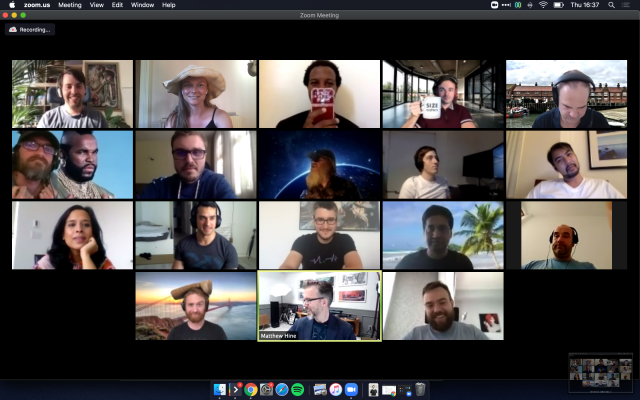Radix, a U.K. startup that’s building a decentralised finance protocol on which new financial apps can connect and be built on top of, has raised $4.1 million in new funding.
Backing the company, which counts the Ethereum network and a number of other “DeFi” projects as competitors, is London-based seed-stage VC LocalGlobe and TransferWise co-founder Taavet Hinrikus.
Radix DLT Ltd. — separate from the non-profit Radix Foundation — had previously raised $1.9 million in equity funding in the form of a SAFE note and will be issued 2.4 billion tokens by the Radix Foundation (see below).
In its own words, Radix DLT is building a decentralised finance protocol that aims to provide “frictionless access, liquidity and programmability of any asset in the world”. The Radix team also claims it has overcome the scalability issue that typically plagues decentralised finance and blockchain-based ledgers.
In a public test of the Radix network last year, it claims to have achieved over 1 million transactions per second, a throughput over 5x higher than the NASDAQ at its peak.
It also positions itself as different from other distributed ledgers and decentralised protocols. Radix is “not trying to be a general purpose platform,” says CEO Piers Ridyard. “Decentralised finance, and by extension, the financial industry is a highly specialised sector that requires a highly specialised set of tools and incentives. Unlike the general purpose protocols that came before it, such as Ethereum, Radix is building a layer 1 protocol specifically for decentralised finance”.
Benefiting from over 7 years of R&D carried out by founder Dan Hughes, a self taught coder from the North of England, Ridyard says that Radix’s sole focus on DeFi from the get-go means Radix is lowering the barriers to adoption via integrations with payment rails and consumer applications, and increasing on-ledger liquidity by making it as easy as possible for developers to build new DeFi apps. The latter consists of the Radix Engine, a developer interface that claims to enable quick public ledger deployments using a “secure-by-design” environment.
But what’s the problem DeFi potentially solves?
At the highest level, proponents of so-called DeFi point to the fact that every system in finance is essentially built on its own, proprietary, non-compatible technology stack that still has far too many human processes behind it. For example, the London Stock Exchange, the U.S. NASDAQ, the Shanghai Stock Exchange are all built as “islands”. To trade across them requires centralised technology, protocol and legal integrations with each.
“That is because finance, lending, borrowing, swapping, and issuance are all done in these little islands of technology that require legal contracts and excel spreadsheets sent over email as the connective tissue,” says Ridyard. “APIs are improving this process, but there is no such thing as a standard API; Plaid became a $5.3 billion company for essentially this reason”.
By being decentralised and interoperable from day one, it’s this ability to trade across ledgers and asset classes programatically that DeFi systems such as Radix want to provide.
“This is the core and key difference for assets and services that are built on public ledgers,” explains Ridyard. “As soon as they are built on Radix, they become interoperable. I can seamlessly and programmatically move my assets from the services of one application, built by one company and team, to that of another, built by a different company and team, but issued and launched on the same decentralised public ledger. The public ledger acts as an interoperable platform for many startups to experiment and build better versions of existing products (such as stock exchanges) or entirely new products (such as continuous function market makers) that are just not possible with the current systems”.
Worth noting, Ridyard says that from a consumer point of view, the products and services aren’t likely to change much in their appearance — they’ll still be accessed via mobile apps and will probably be offered via regulated companies as they are today. Instead, he says the consumer-facing upsides will be speed, higher rates on deposits and the seamless ability to swap between asset types without needing to go into cash as the interim asset.
Adds the Radix CEO: “I should also stress that decentralised finance is not about moving existing banks onto public ledgers. It is about unbundling of banking services (borrowing, lending, investment) into applications that can all interoperate on a single public network. Banks are like newspapers coming into the internet age, some will make the transition, but not all”.
Cue statement from LocalGlobe’s Saul Klein (for posterity, if nothing else): “I see the same revolutionary potential in the Radix team as I did with the Skype and Netscape teams at the birth of the internet. We’re excited to join them at the start of a new decentralised network revolution”.
*Radix has two main legal entities: Radix DLT Ltd and the Radix Foundation. Since inception, both have received funding in different forms. The Radix Foundation is a not-for-profit company limited by guarantee, registered in the U.K., and was created to promote the long term interests of the Radix Public Network as well as help manage the Radix community and ecosystem. Between 2013 and 2017, people from the Radix Community contributed 3,000 BTC in exchange for 3 billion RADIX tokens issued by the Radix Foundation. These tokens arguably have value as they’re needed to pay the transaction fees to use the Radix protocol.










